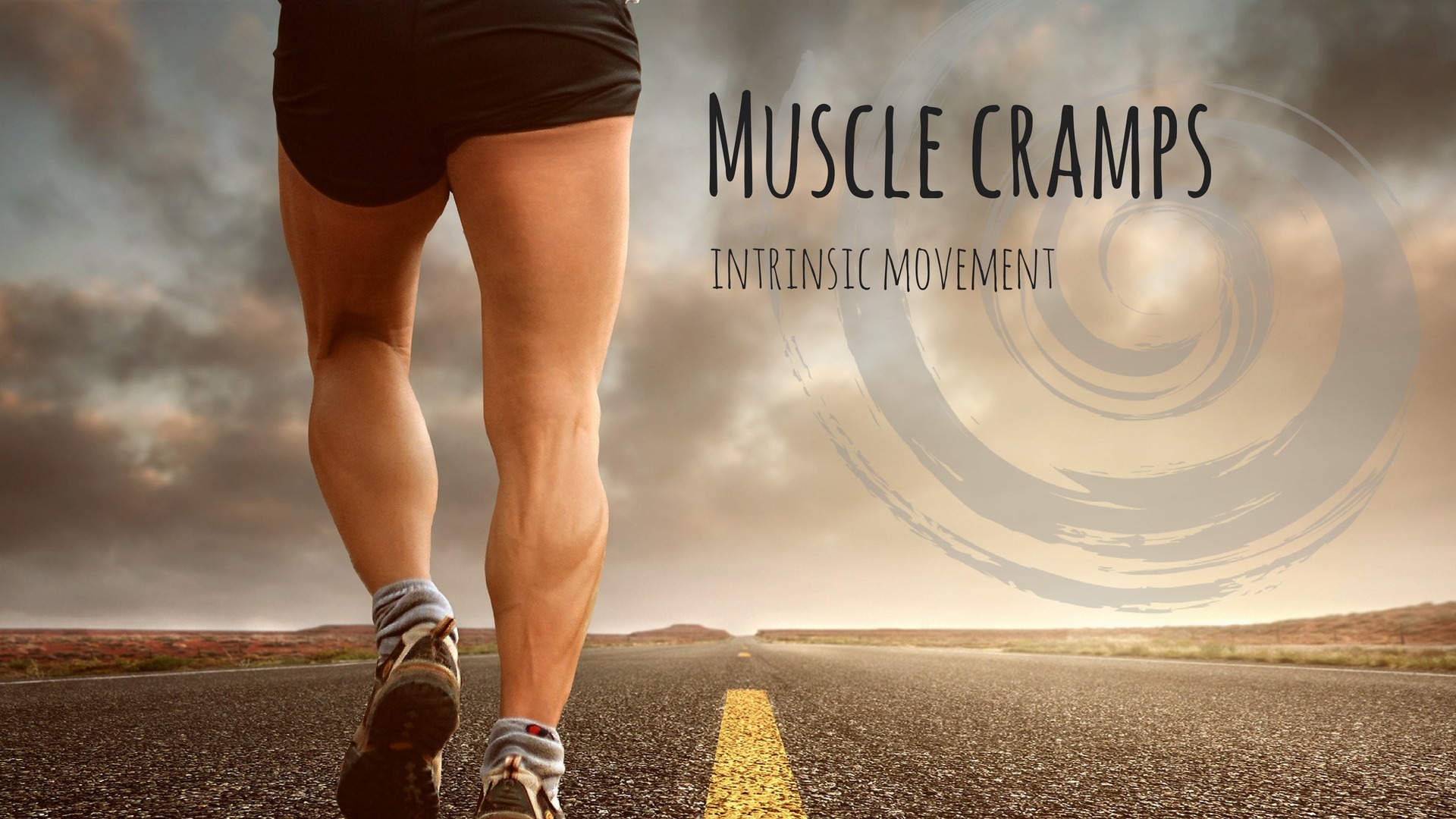Muscle cramps occur when one of your muscles suddenly and forcibly contract and is unable to relax from the contractile state. This action is involuntary, meaning you have no control over it.
Cramps can last anywhere from a few seconds, up to 15 minutes and in some cases even longer. Often you can see and feel the muscle bulging under the skin, especially if the whole muscle is contracting and not just a few fibers. Cramps are quite painful and can be temporarily debilitating.
The calves and hamstrings are the most commonly affected muscles, as are the intrinsic muscles in the feet. However, cramps can occur in any muscle of the body.
What causes muscle cramps?
Nearly everyone will experience a muscle cramp at some point in their life. Either during activity or nocturnal cramps that wake you from your sleep. They often become more frequent with age.
There is a multitude of reasons your muscles could cramp and often it is a combination of a few.
Dehydration
If your muscles aren’t adequately hydrated they are not as efficient in functioning, they tend to constrict and this may contribute to cramps.
Vigorous activity
This can certainly lead to muscle cramping, especially if you are unaccustomed to the level of activity. Or when you exert yourself to the point of muscle fatigue. Cramping can occur during the activity, or come immediately or after many hours post-event.
Nutritional Deficiency
Too little calcium, magnesium, potassium or sodium can be a contributing factor in muscle cramps. Your muscles need an adequate supply of nutrients to create energy to move.
Inadequate blood supply
This causes the same type of effect as being nutrient deficient. As the blood is the transport system that delivers nutrients and oxygen to the muscles. Both of these are essential for muscle function, health, and repair.
Nerve compression
Electrical signals that travel from the brain to muscles are effected if the nerves are compressed or irritated, particularly in the lower back, and can result in muscle cramps.
Sensations of numbness, burning, tingling or shooting pain are associated with nerve involvement.
Injury or imbalance
Injury will cause muscles will spasm, in order to protect an area from further damage. Muscle imbalances can also cause the muscle to spasm. This spasm of the muscle ultimately can lead to cramps.
How do you ease muscle cramps?
Muscle cramps will resolve on their own, generally in a few minutes or so but those minutes can be quite painful. When a cramp begins stop whatever activity you are participating in and slowly stretch the muscle.
Because the cramp is a sudden contraction (shortening) of the muscle, gently completing the opposite action (lengthening) will help to resolve the cramp quicker.
Applying heat and massaging the muscle will also help to ease the cramp by relaxing the area.
Always consult your doctor if muscle cramps are severe or occurring quite often without an obvious cause. Seek medical attention if they are associated with tight, shiny, red skin and swelling of the area.
What to do to prevent future muscle cramps.
Water
Keeping your water intake up. Fluids help your muscles contract and relax easily by keeping muscle cells hydrated. It also reduces muscle irritability, especially if participating in vigorous activity.
Aim for around 8 glasses per day. If exercising especially in the heat will cause you to lose fluids so you may require more.
Electrolytes
If you find that you are excessively perspiring it may pay to get a sports drink into you to replenish any electrolytes lost.
Or perhaps a banana. There have been studies done that show the benefits of bananas could outweigh the benefits of sports drinks. As they offer a healthier blend of sugars, potassium, vitamin B6, and fiber.
Magnesium
Bathing with Epsom salt or magnesium flakes in the water may be just what your muscles need. The warm water combined with the magnesium will relax muscle aches and pains.
The magnesium is absorbed through your skin and helps to balance your body’s PH levels. While also loosening tight muscles and supplying nutrients.
Stretch and strengthen
It is incredibly important to keep your muscles healthy strong and flexible. A routine of stretching and exercise is a must for optimal muscle health and reducing the occurrence of cramps.
Make sure you allow adequate warm-up time (brisk walk and dynamic stretches) before exercise. And equally important, cool down afterward (slower walk and static stretching).
Massage
Regular massage dramatically reduces the occurrence of cramps. It does this by increasing blood circulation, working out tension and trigger points in the muscle and inducing relaxation.
Massage received after vigorous exercise not only reduces the chance of cramps but also reduces after exercise soreness (DOMS- Delayed muscle onset soreness).
Myotherapy
And last but definitely not least, working with your Myotherapist to assess and identify any muscle imbalances. Following that discussing a treatment plan with a stretch and strengthening program.
Muscles work in opposing pairs (agonist and antagonist) or in groups helping each other (synergistically). Imbalances occur when one muscle becomes overdominant, leading to the antagonist or synergist becoming weakened. These imbalances predispose injury.
If you are suffering from an injury it is a good idea to consult your GP as well as your Myotherapist for advice on ways to reduce recovery time, improve the healing process and avoid further injury or future re-injury.
Always consult your doctor if muscle cramps are severe or occurring quite often without an obvious cause. Seek medical attention if they are associated with tight, shiny, red skin and swelling of the area.
Thanks for reading, I hope you have found this article to be useful.
If you have any questions or would like to book in a Myotherapy or massage session you can contact me via the below information.
